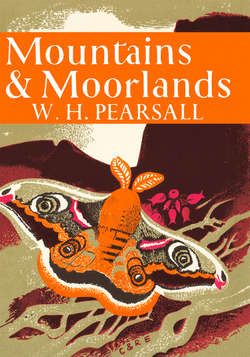Читать книгу Mountains and Moorlands - W. Pearsall H. - Страница 7
CHAPTER 1
ОглавлениеINTRODUCTION
“The grounde is baren for the moste part of wood and come, as forest grounde ful of lynge, mores and mosses with stony hilles.”
(LELAND)
A VISITOR to the British Isles usually disembarks in lowland England. He is charmed by its orderly arrangement and by its open landscapes, tamed and formed by man and mellowed by a thousand years of human history. There is another Britain, to many of us the better half, a land of mountains and moorlands and of sun and cloud, and it is with this upland Britain that these pages are concerned. It is equal in area to lowland Britain but its population is less than that of a single large town. It lies now, as always, beyond the margins of our industrial and urban civilisations, fading into the western mists and washed by northern seas, its needs forgotten and its possibilities almost unknown.
Nevertheless, to the biologist at least, highland Britain is of surpassing interest because in it there is shown the dependence of organism upon environment on a large scale. It includes a whole range of habitats with restricted and often much specialised faunas and floras. At times, these habitats approach the limits within which organic life is possible, and they are commonly so severe that man has avoided them. Thus we can not only study the factors affecting the distribution of plants and animals as a whole, but we can envisage something of the forces that have influenced human distribution. Moreover, in these marginal habitats we most often see man as a part of a biological system rather than as the lord of his surroundings.
This book, then, deals primarily with mountains and moorlands as habitats for living organisms. Many plants and animals are mentioned, usually without detailed descriptions, except where they can be seen to be a characteristic part of the environmental system as a whole, or where they illustrate typical relations between organisms and environment. For this reason also no attempt is made to give full lists. It is also inevitable that the plant-soil relationship occupies in outline a large part of the story because this is the feature which links the animate with the inanimate.
It would hardly be possible to frequent upland Britain without becoming an admirer of its beauty. Its scenery is due to the interplay of its geological structure, of its climate and vegetation, and of human influences. It thus becomes important to the biologist as an integration of the interplay of these habitat factors and often his first interest will be to look keenly at the scenery for clues in the analysis of the environmental factors. As Professor Dudley Stamp has pointed out in his volume Britain’s Structure and Scenery, the scenery of the British Isles is remarkable in its diversity, and this conclusion applies with special force to the British Highlands. Diversity of aspect means diversity of habitat and of biological pattern. It offers a fruitful and as yet hardly explored field for the naturalist’s work and one which is particularly attractive because very valuable results can be obtained without highly specialised knowledge or apparatus.
While the study of the relations between organism and environment is no new aspect of biological inquiry, it is nowadays dignified by a special name and is called the science of ecology. The ecological study of mountains and moorlands may be in its infancy but their fauna and flora have long been objects of interest to naturalists. It is evident from the routes they followed and the lists of plants they collected from 1660 onwards, that John Ray and his associates were no strangers to the high northern hills, but the first record of an ascent of a British mountain we owe to another botanist—stout Thomas Johnson—whose account of the ascent of Snowdon in 1639 all naturalists will enjoy, especially perhaps the concluding sentence: “Leaving our horses and outer garments, we began to climb the mountain. The ascent at first is difficult, but after a bit a broad open space is found, but equally sloping, great precipices on the left, and a difficult climb on the right. Having climbed three miles, we at last gained the highest ridge of the mountain, which was shrouded in thick cloud. Here the way was very narrow, and climbers are horror-stricken by the rough, rocky precipices on either hand and the Stygian marshes, both on this side and that. We sat down in the midst of the clouds, and first of all we arranged in order the plants we had, at our peril, collected among the rocks and precipices, and then we ate the food we had brought with us.”
Johnson lived in troubled times and he was later to die of his wounds as a Cavalier soldier. If interest in the Alps may be said to have started as a result of de Saussure’s scientific expedition to Mont Blanc in 1787, we may perhaps fairly regard Johnson as a British de Saussure at a far earlier date, though on a more modest and unassuming scale.
FIG. 1.—Map of areas discussed, showing some of the Nature Reserves in Highland Britain.
